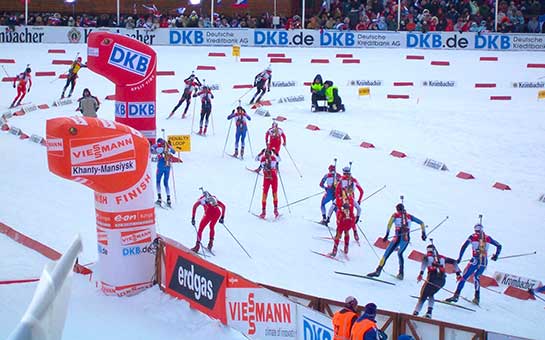Are you a marksman with a penchant for skiing? Then the biathlon, a popular winter sport, might be the right fit for you. It combines the best of both worlds, so you get to ski and shoot a rifle to your heart's content.
The biathlon is a competitive sport in the Winter Olympics. Though the Olympics biathlon is dominated by Scandinavian athletes, a lot of other countries also compete in it. Many travel around the world to find the perfect ski track.
A biathlon has the hazards of both skiing and rifle shooting. Prepare against any unforeseen accidents by securing yourself with hazardous sports travel insurance.
Travel Insurance for Biathlon Competition
To find the best biathlon competition, you may have to travel. But most standard travel insurance plans don’t cover medical treatment for injuries sustained during an adventure sport like the biathlon. That means your vacation might get tanked by a mountain of medical bills. But you can easily avoid that situation. Just secure your finances with extreme sports travel insurance. It will not only work to take care of your medical bills, but it could also cover damage to your equipment, depending on the plan.
Be sure to buy a hazardous sports travel insurance plan before you head out to the snow.
Biathlon Basics
Biathlons originated in the Scandinavian region during the 18th century. It might have been a direct result of Swedish ski fighting in the Norwegian war. The first organized biathlon was held in 1767 between two ski patrols. The biathlon was included in the first Winter Olympics in 1924, but back, then it was called "military patrol" and performed as a demonstration. The first competitive biathlon for men was in the Olympics of 1960.
Only trained athletes attempt the biathlon. The biggest risk is sustaining injuries during intensive training. Overstraining the same muscle group over and again every day can cause long-lasting severe injuries. Ironically, most of these happen outside of competition season. It is important to regulate your training load. If you are switching from another sport, then go slow, and increase your training intensity only when you are sure that you can handle it.
The biathlon rifles are specially made. They are much lighter than normal rifles, but they still add around 4.6 kilograms (about 10 pounds) to your load. That might not seem like a lot, but it's a substantial difference when you are skiing cross-country. Practice skiing with the rifle so you are not caught unaware and don’t lose your balance when you ski. Gunshot wounds in biathlon are very rare. But there have been such individual reports over the years. Do wear your protective gear.
Risks of Biathlon Competition
The risks in biathlons are real. Athletes suffer from a host of overuse injuries during the high-intensity training period. The most common ailment is lower back pain, which comes from repetitive movements of lying prone and then getting up to shoot the rifle. Other injuries include runner’s knee, patellofemoral pain syndrome, and compartment syndrome in the leg. Common risks are cramps, muscle sprains, fatigue, and shoulder ligament damage.
You cannot make a biathlon completely risk-free. But you can protect yourself from the financial impact of injuries by securing yourself with adventure sports travel insurance.

